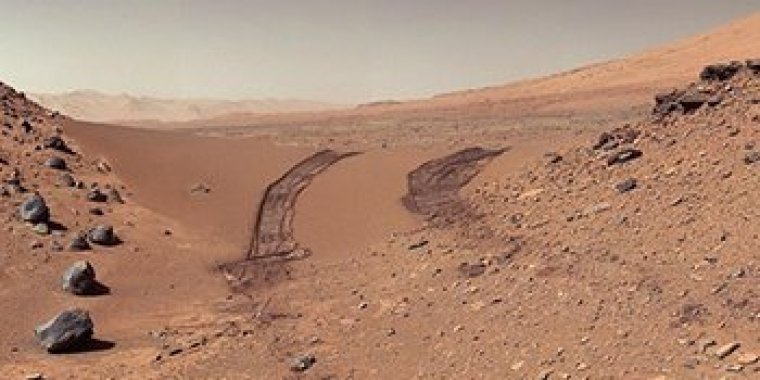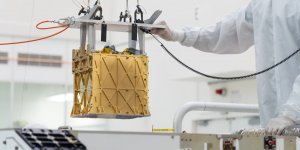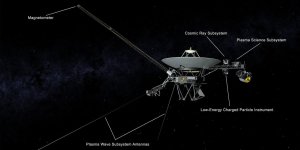| News / Space News |
A new water treatment on Earth could also help Mars explorers
Engineers at the University of California, Riverside have developed a catalyst to remove a dangerous chemical from water on Earth that could also make Martian soil safer for agriculture and help produce oxygen for human Mars explorers.

A catalyst that destroys perchlorate in water could clean Martian soil. Photo: NASA/JPL-Caltech/MSSS
Perchlorate occurs naturally in some soils on Earth, but is especially abundant in Martian soil. As a powerful oxidizer -- a substance capable of transferring negatively charged oxygen to another substance -- perchlorate is used in solid rocket fuel, fireworks, munitions, airbag initiators for vehicles, matches and signal flares. It is also a byproduct in some disinfectants and herbicides.
Because of its ubiquity in both soil and industrial goods, perchlorate is a common water contaminant that causes certain thyroid disorders.
The chemical accumulates in plant tissues; a large amount of perchlorate found in Martian soil could make food grown there unsafe to eat, limiting the potential for human settlements.
Perchlorate in Martian dust could also be hazardous to explorers. Current methods of removing perchlorate from water require harsh conditions or a multistep enzymatic process to lower the oxidation state of the chlorine element into the harmless chloride ion.
Researchers Changxu Ren and Jinyong Liu took inspiration from nature to reduce perchlorate in water at ambient pressure and temperature in one simple step. They noted that anaerobic microbes use molybdenum in their enzymes to reduce perchlorate and harvest energy in oxygen-starved environments.
"Previous efforts to construct a chemical molybdenum catalyst for perchlorate reduction have not been successful," Liu said. "Many other metal catalysts either require harsh conditions or are not compatible with water."
The researchers emulated the complicated microbial perchlorate reduction process with a simplified approach. They found that mixing a common fertilizer called sodium molybdate, a common hydrogen-activating catalyst called palladium on carbon, and a common organic ligand called bipyridine to bind the molybdenum produced a powerful catalyst.
This catalyst quickly and efficiently broke down the perchlorate in water using hydrogen gas at room temperature with no combustion involved. (National Science Foundation)
YOU MAY ALSO LIKE





